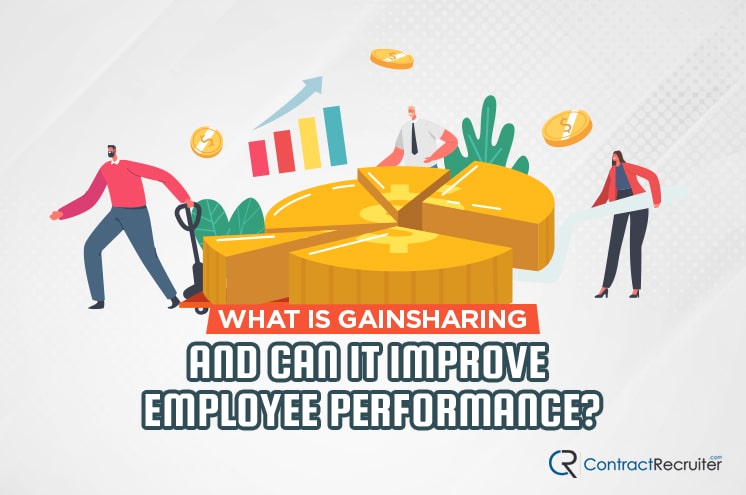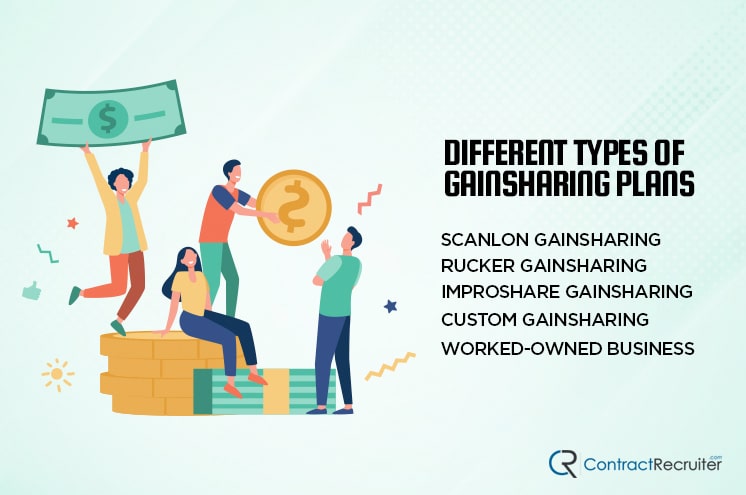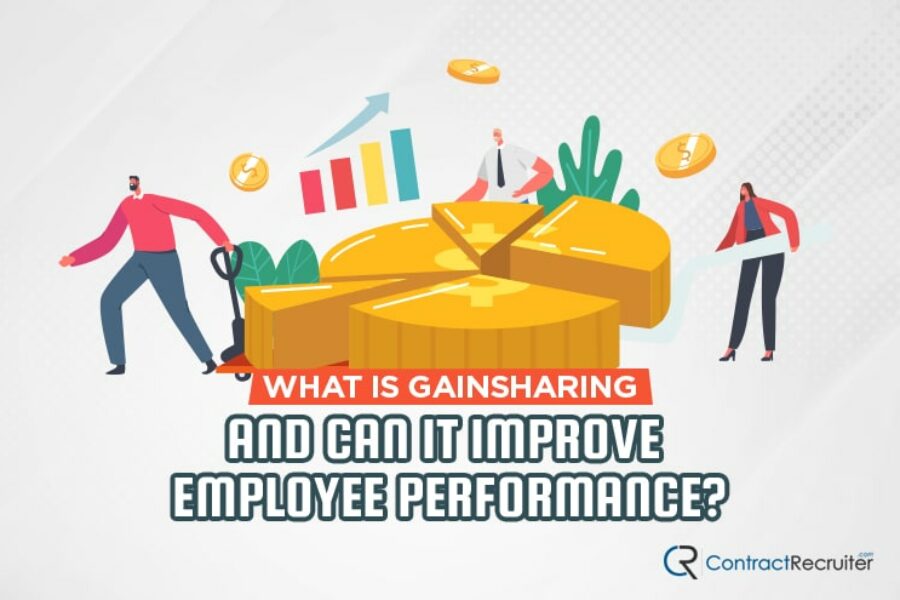

In the business world, there are dozens of different frameworks, incentive programs, and punishment/reward systems you can use to influence the performance of your employees. Some of them are highly effective; others have long been proven ineffective. Still others are reliant on the people in your team.
One such program is gainsharing. You may have heard of it, but you may not be clear on what it is. Let’s analyze it and see if it could be a valuable process to implement in your company.
What is Gainsharing?
Gainsharing is a means of motivating your employees using financial bonuses. It’s very similar to profit-sharing, so understanding profit-sharing can be beneficial to understanding gain sharing.
“Gainsharing is best described as a system of management in which an organization seeks higher levels of performance through the involvement and participation of its people. As performance improves, employees share financially in the gain. It is a team approach; generally, all the employees at a site or operation are included.” – HR-Guide.
In profit-sharing, a baseline amount of profit is set. Then, profits are measured throughout a predetermined period – usually a financial quarter or a fiscal year. If the company exceeds the baseline, the excess profit is distributed amongst employees as a bonus incentive.
One of the significant drawbacks of profit-sharing is that it’s reliant on factors outside of the control of employees. Employees can go out of their way to exceed expectations at every level, but a financial crash, dropping demand, an introduction of a competitor product, or a negatively-received public statement by the CEO can tank profits and eliminate the bonus the employees are, by rights, due.
Gainsharing eliminates this issue.
Gainsharing is similar to profit-sharing in that it sets a baseline for the performance of a company and then rewards employees financially if that baseline is exceeded, typically over a month or a quarter.


The difference is in what is measured. Rather than measuring company profits – which are influenced by many factors outside of the control of employees – gainsharing attempts to measure only those factors that employees directly influence. These factors may include:
- Company spending.
- Overall productivity.
- Customer service quality and survey results.
- Overall product quality.
In this way, gainsharing is more directly tied to the employees’ actions. When a team works well together and exceeds expectations, the team is rewarded. When conflicts arise, productivity declines, or other factors reduce the team’s overall effectiveness; those rewards are lost.
Gainsharing is most commonly used in independent organizations and often in mid-sized or smaller organizations. It’s easier for a small company with a single location and a few dozen employees to measure overall metrics than to apply one overarching incentive program to a multi-location business.
Gainsharing also requires buy-in from employees. Employees operating under a gainsharing program typically have close involvement in the administration and design of the program itself. That helps ensure that the metrics measured are most applicable and are not “orders from on high” that may not be accurate to what employees care about.
Critically, because gainsharing is a form of bonus, employees are always given a baseline wage. There’s no risk of underperforming resulting in a cut salary, only opportunities for benefit. It’s a reward program, not a punishment program.
Different Types of Gainsharing Plans
There are several different frameworks for gainsharing. Each has advantages and disadvantages, and are essentially successive iterations on the concept of gainsharing as introduced by the first plan, the Scanlon plan.


1. Scanlon Gainsharing
The Scanlon gainsharing plan is the original form of gainsharing, introduced in the 1930s by Joe Scanlon, a labor organizer, and MIT lecturer. It measures the ratio of labor cost to the amount of labor produced.
Scanlon identified a common issue with hourly-compensated employees: there is little to no incentive to perform more than the bare minimum per hour. If an employee is responsible for bending paperclips and gets paid a fixed amount per hour, it doesn’t matter if they bend 100 per hour or 500; they have no incentive to do any more than the minimum necessary to prevent being fired for underperformance.
With gainsharing, the more paperclips the employees bend, the more of a bonus in pay they can receive. This opens up three avenues of benefit for the employees:
- Some will maintain the same work hours and take home more money.
- Some will maintain the same take-home pay and work fewer hours.
- Some will seek avenues for optimization and improvement to work more efficiently, increasing both.
There is one primary drawback to the Scanlon plan. Specifically, it ties financial incentives to the quantity of work produced. Because speed and efficiency are prized, quality can drop without affecting bonuses. Solving this problem is outside the realm of the Scanlon plan.
2. Rucker Gainsharing
If Scanlon is quantity gainsharing, Rucker is quality gainsharing. Rucker is more commonly used in industries with relatively fixed production rates or few opportunities to improve speed or output, such as healthcare, mechanized manufacturing, or direct sales.
Instead, Rucker gainsharing will measure elements of quality or production other than speed and quantity. For example:
- It may measure the amount of waste material produced in a manufacturing process and reward more efficient use of raw materials.
- It may measure the number of products returned as defective and reward lower rates of returns.
Because Rucker gainsharing is tied to quality rather than quantity, it encourages employees to be more judicious in their judgment and overview of quality control and put more effort into ensuring quality. However, since productivity rate is not measured, it can have the opposite effect as Scanlon, suppressing productivity in favor of quality.
3. Improshare Gainsharing
One common issue with Scanlon gainsharing is that it can be more rewarding for lower-paid employees over higher-paid employees because it’s a direct ratio of the cost of labor to the production results of that labor.
Improshare is a similar framework, except rather than use the labor cost, it uses person-hours for that labor measurement. The ratio of production hours to products produced forms the benchmark, which can be improved to earn bonuses.
4. Custom Gainsharing
In addition to the formalized plans above, many companies have created unique variations on gainsharing. Often, an employee union can negotiate a gainsharing plan with management, or an entire organization can negotiate a gainsharing plan with upper management and executives. These plans vary but are often some combination of elements of the previous three forms.
5. Worked-Owned Business
A natural extension of gainsharing wraps back around to profit-sharing. Worker collectives and worker-owned companies take gainsharing to the next level by offering all workers some level of vestment into stock options or other profit-sharing methods. With these incentives, the overall performance of an organization has tangible, though often indirect, results on the net worth of the workers involved.
Much like custom gainsharing plans, there is a wide range of worker-owned structures, ranging from the option to buy discounted stocks after a certain period of working to an entire suffusion of company culture with worker-owned objectives.
Overall Advantages of Gainsharing
Gainsharing is an incentive program. Thus, if it works, it encourages workers to work more effectively, either in terms of raw productivity, efficiency, or another measured metric you choose to monitor.
One significant advantage of gainsharing is that the bonuses awarded to employees are directly taken from the increase in profits the company experiences due to the improvements employees make. You don’t need to set aside funds for those bonuses; if the employees don’t increase productivity or efficiency enough to earn extra money (through profits or reduced expenses), there are no bonuses to pay out.
Bonuses in gainsharing are paid out across an entire organization, though the proportions may vary on an equitable basis. The exact structure is left to the company and employees to determine. That helps eliminate instances where increased performance only rewards managers or executives and not the people doing the work.


Different kinds of gainsharing programs, including modern hybrid plans, can be very useful in incentivizing a variety of different means of improvement. When many metrics are measured, any one of those metrics improving (without reducing other metrics) can result in a bonus. Each employee can work towards the same goal in a way that best suits them, whether it’s increasing raw productivity, increasing efficiency, reducing waste, ensuring higher quality, ensuring better service, or another metric.
On a more sociological and psychological level, gainsharing programs encourage taking ownership and pride in the efforts produced by the company, even at a low level in the organization. This fosters a culture of continuous improvement and growth. It also encourages employees to feel deeply involved in the company’s success. After all, there are immediate, tangible rewards for their efforts.
Additionally, when gainsharing is calculated and awarded monthly, the feedback loop accelerates, and employees can see a more direct reward for specific efforts rather than an averaged reward for various actions over a quarter or a year.
Are There Disadvantages to Gainsharing?
An important consideration when examining gainsharing is the potential disadvantages of such a program. There are several.
First, because gainsharing is not tied to profits the way profit-sharing is, it doesn’t necessarily fund itself. If employee productivity and quality are up, but overall profits are down due to factors outside of the organization’s control (a financial downturn, a new competitor, a decline in industry interest), the company still needs to pay out gainsharing bonuses, even if it hurts the bottom line.
Gainsharing also requires immense transparency in all of the metrics involved in the gainsharing process. If there’s no transparency, there’s no trust and no buy-in from employees. After all, if employees can’t see the metrics they’re judged by, how can they know whether or not they’re getting what they’re owed?


In some cases, gainsharing can build an adversarial relationship between employees and management. For example, suppose management decides to implement a new process, verification step, or review that hinders productivity for little benefit. In that case, employees may view it as a way to reduce the potential gainsharing bonuses they receive artificially, and they will push back against it.
Note that this isn’t necessarily a drawback to gainsharing. If management is out of touch and attempts to implement a process employees can recognize as irrelevant and detrimental, that push-back (to a receptive management team) can help realign management decisions.
Additionally, gainsharing may put more onus on individuals to pull their weight, despite any personal issues they may be experiencing. Employees may, for example, be encouraged to work while sick; otherwise, the team’s productivity drops, and their bonus is put at risk. However, this can be mitigated through the careful use of measurement and ratios in productivity.
Should Your Company Implement Gainsharing?
Gainsharing can be a powerful way to incentivize employees and encourage more productive, higher quality, more efficient work.
That said, it only works in specific situations. A massive company with many layers of management, multiple office locations, a global presence, or a massively complex service offering may be challenging to measure appropriately.
Gainsharing also requires significant buy-in from both workers and management. It requires a very in-touch, participative management team, and workers need to be invested in the business’ success to believe that gainsharing is beneficial to them. Otherwise, it may be viewed as a way to suppress wages through loopholes in metrics.


If your company operates on thin margins, gainsharing can be an excellent way to incentivize improvements across the board. On the other hand, if improvements in employee productivity don’t necessarily translate into increased profits, gainsharing might be expensive to maintain.
It’s impossible to make a single determination from our perspective whether or not your company should implement gainsharing. You can examine the options yourself directly and make that determination. Suffice it to say that, in the right circumstances, gainsharing can be highly beneficial. However, it’s not universally beneficial; ensure your company can benefit from it before investing in its implementation.
Do you have any questions or concerns about gainsharing? Would you like a little more clarification on the types of gainsharing that we mentioned today? Is there anything that you’re not quite fully grasping? If so, please feel free to leave a comment down below, and we’ll get a conversation started! We’d be more than happy to clear up any concerns and answer any questions you may have on the topic!


